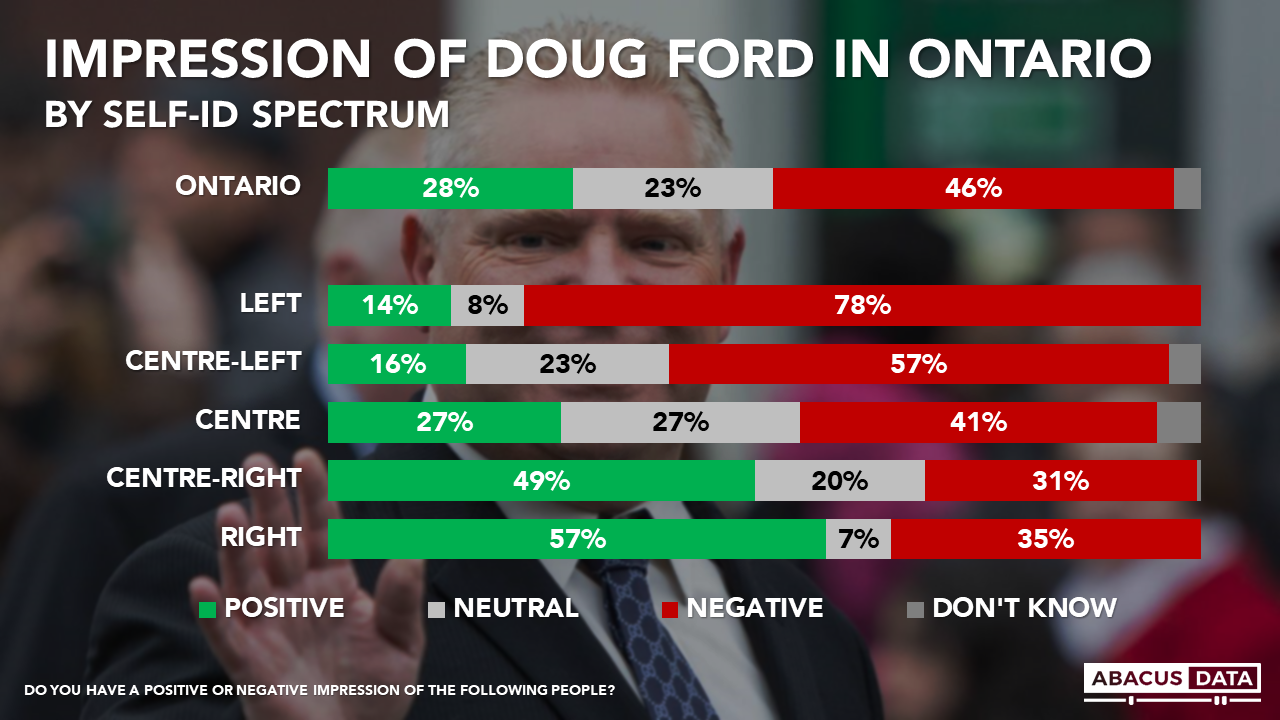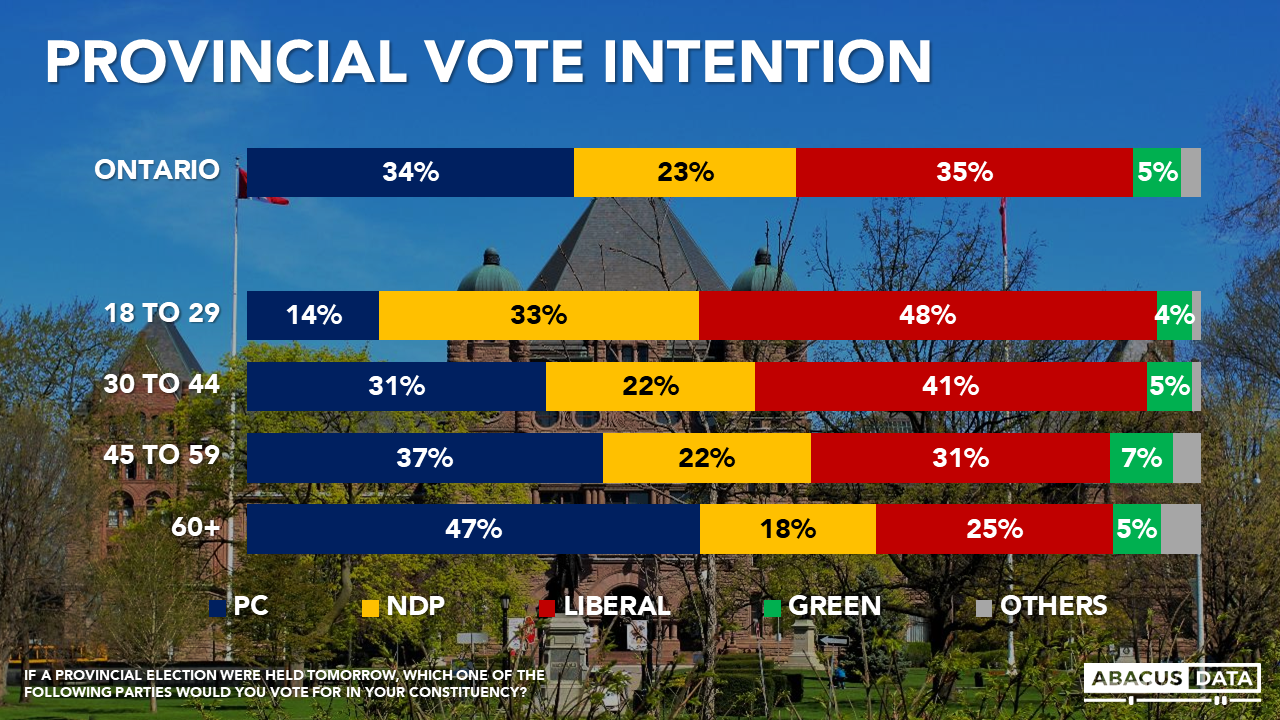Doug Ford’s negatives rise 9-points in a week as public responds to new restrictions
April 21, 2021
Listen to David Coletto’s new podcast inFocus with David Coletto
As part of our national survey completed this morning, we asked some questions exclusively of the 1007 respondents living in Ontario. Note, this survey was completed entirely after Premier Ford’s press conference on Friday afternoon.
Here’s a quick summary of what we found:
In a week, Premier Ford’s negatives have increased by 9-points. He is more unpopular than he’s been at any point since start the pandemic.
Overall, 46% of Ontarians have a negative view of the Premier, up 9-points since last week while 28% have a positive impression (down 11 since last week).

Mr. Ford is viewed negatively now by 22% of those who voted PC in 2018 (that’s up 9 points in a week). A majority of Liberal, NDP, and half of Green voters have a negative view of the Premier.

Perhaps most troubling for the Premier is that his negatives are rising among those who self-identify on the right of the political spectrum. Among those on the right, 35% have a negative view of the Premier (up 12-points in a week). 3 in 10 who self-identify on the centre-right have a negative view (up 5 since last week).
He’s also angered those on the left side of the spectrum, 78% of whom have a negative view (up 33-points!).

In short, his announcement on Friday had the effect of upsetting voters on all sides of the spectrum, including his base on the political right of the province.
Despite the drop in Mr. Ford’s approval, vote intentions have not changed much. The Ontario Liberals and PCs remain statistically tied with the NDP in third.
If an election were held at the time of the survey, the Ontario Liberals would get 35%, the PCs 34%, the NDP 23% and the Greens 5%. There is almost no change from our previous survey that was completed on April 14.

Regionally, the Liberals have a slight lead in Toronto, while the PCs and Liberals are statistically tied in all other regions except for eastern Ontario where the PCs have the lead.

The big story is vote intention by age. If only those under 45 voted, the Ontario Liberals would likely win a majority. However, if only those over 44 voted, the PCs would win. The age divide in vote intention is very wide.

UPSHOT
In less than a week, the Premier’s image has soured substantially. Almost half the province has a negative view of him, the highest since the start of the pandemic. He’s upset not just his usual opponents and detractors, but also a large part of his base.
So far, this hasn’t translated into a decline in vote share for the PCs. But they remain 7 points back from their share of the vote in the previous election while the Liberals have rebounded into a virtual tie for the leader. If anything, the increased anger among centre-left voters could encourage consolidation around one of the alternatives. If that happens, the PCs and Mr. Ford will have a very hard time being re-elected.
We will continue to monitor the situation in Ontario.
And don’t miss any of our research and analysis, plus get our weekly Worth A Look newsletter. Sign up today.
Interested in an exclusive polling brief after the federal budget? Find out more
ABOUT ABACUS DATA
We are the only research and strategy firm that helps organizations respond to the disruptive risks and opportunities in a world where demographics and technology are changing more quickly than ever.
Find out more about what we are doing to help clients respond to the COVID-19 pandemic.
We are an innovative, fast-growing public opinion and marketing research consultancy. We use the latest technology, sound science, and deep experience to generate top-flight research-based advice to our clients. We offer global research capacity with a strong focus on customer service, attention to detail and exceptional value.
We were one of the most accurate pollsters conducting research during the 2019 Canadian Election.

Contact us with any questions.
Find out more about how we can help your organization by downloading our corporate profile and service offering.
METHODOLOGY
The survey was conducted with 1,007 Ontario residents from April 16 to 21, 2021. A random sample of panelists were invited to complete the survey from a set of partner panels based on the Lucid exchange platform. These partners are typically double opt-in survey panels, blended to manage out potential skews in the data from a single source.
The margin of error for a comparable probability-based random sample of the same size is +/- 3.1%, 19 times out of 20.
The data were weighted according to census data to ensure that the sample matched Ontario’s population according to age, gender, educational attainment, and region. Totals may not add up to 100 due to rounding.



